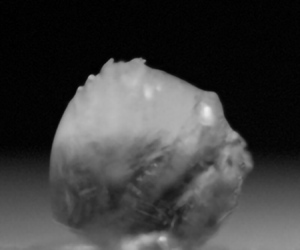No CrossRef data available.
Article contents
On shock induced aerobreakup of a wall-attached droplet
Published online by Cambridge University Press: 25 September 2023
Abstract

An experimental study on the aerobreakup of a wall-attached droplet induced by a shock wave is carried out in this work. The shock wave and the post-wave air stream are generated by a shock tube facility, and the dynamics of droplet breakup are captured through high-speed imaging from the side, the oblique front and the back views, respectively. The wall-attached droplets with different wettabilities are considered, including the hydrophobic, hemispherical and hydrophilic ones. For the convenience of analysis, droplets with different wettabilities are unified with the same equivalent radius and, thus, the same Weber number and Reynolds number. Different from the evolution of a free spherical droplet, it is observed that the hydrophobic droplet can develop ‘peak’ structures on the windward and leeward sides, respectively; while the hemispherical and hydrophilic droplets leave a liquid film on the wall. The occurrence of ‘peak’ structures is caused by the local standing vortex on the droplet windward and leeward sides, and the residual of a liquid film on a solid wall is related to the boundary layer near the wall. Through comparing the height, width and advancing distance of droplet deformation between the spherical droplet and the wall-attached droplets with different wettabilities, it is found that the wall will inhibit the deformation and fragmentation of droplets on the flow direction. The ‘peak’ and film structures are responsible for the deviation of the dimensionless width between spherical and wall-attached droplets. The ‘lip’ structure is related to the recirculation flow at the rear of the droplet, which causes the reverse of velocity on the surface. The radius of the ‘lip’ decreases with the decrease of contact angle. The Rayleigh–Taylor (R–T) and Kelvin–Helmholtz (K–H) instabilities of wall-attached and spherical droplets are also studied by experiments and theoretical analysis. With the decrease of contact angle, the development of the K–H instability hardly changes, while the R–T instability results in a smaller wavelength of perturbation on the windward side. This study is expected to give some guidance for regulating the aerodynamic fragmentation of droplets in engineering applications.
- Type
- JFM Papers
- Information
- Copyright
- © The Author(s), 2023. Published by Cambridge University Press





